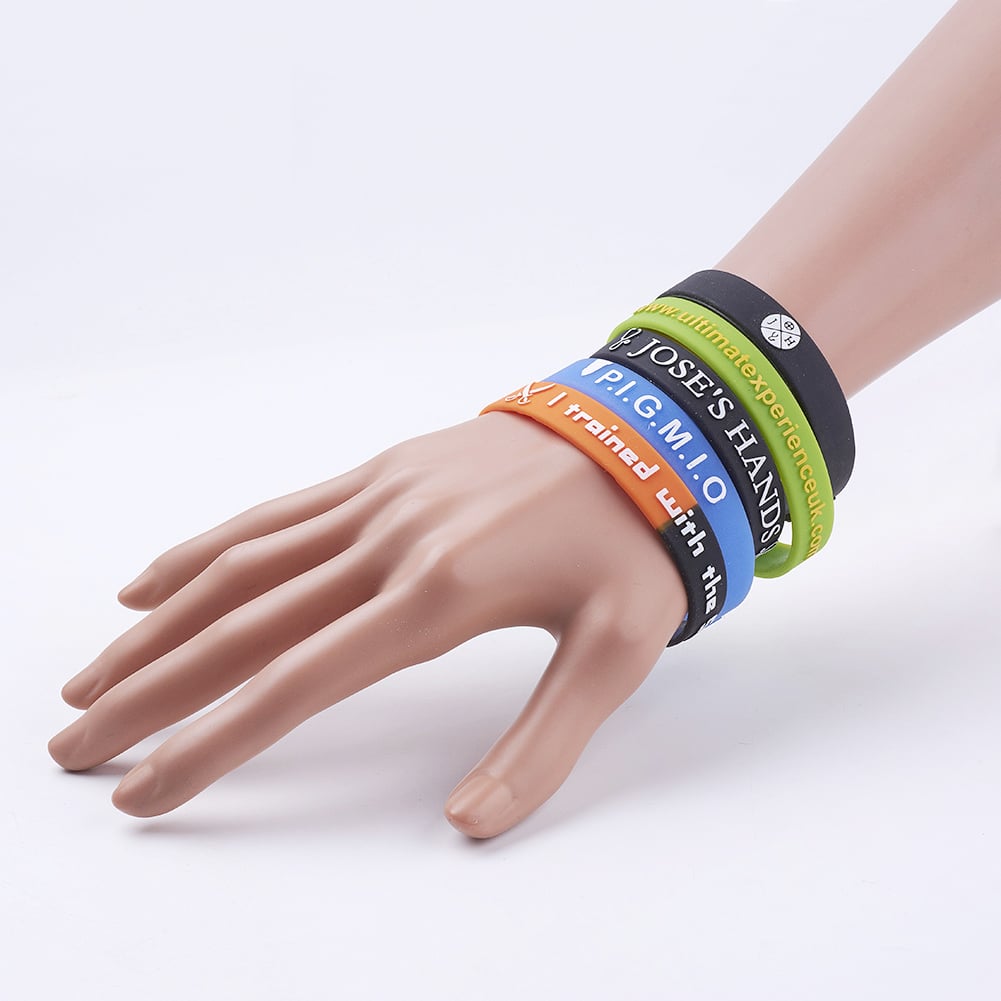Table of Contents
In today’s diversified educational environment, various innovative tools and methods are emerging in an endless stream, bringing unprecedented convenience and efficiency to educational institutions. Among them, silicone wristbands, as a seemingly simple but functional accessory, are gradually showing their unique charm in the field of education. This article will explore the multiple functions of silicone wristbands in the field of education and reveal how they have become an indispensable part of educational institutions.
Identity identification and security management
One of the most basic and widespread applications of silicone wristbands is as identity identification. In large educational institutions, such as universities or international schools, there are many students, faculty and visitors, which makes management quite complicated. By distributing silicone wristbands with unique identification codes to everyone, institutions can quickly identify and verify identities to ensure that only authorized personnel can enter specific areas or participate in activities. This instant identity confirmation method not only improves security, but also effectively simplifies the check-in and identity verification process.
Going further, silicone wristbands can also integrate RFID (radio frequency identification) technology to make identity identification and tracking more intelligent. For example, in an emergency, the school can quickly locate the location of all students and faculty on campus to ensure everyone’s safety. In addition, for students who need special attention, such as those with allergies or specific medical needs, the information on the silicone wristband can provide instant guidance to teachers and medical staff, ensuring that appropriate response measures can be taken quickly in emergency situations.
Event management and participation enhancement
In educational institutions, various activities are an important part of student life, including sports events, cultural festivals, academic lectures, etc. Silicone wristbands play a key role in these activities, not only as admission tickets, but also as souvenirs, enhancing students’ sense of belonging and participation in the activities.
Through customized silicone wristbands, educational institutions can print event themes, dates and slogans on the wristbands, and even embed creative elements such as LED lights, making the wristbands a fashionable and practical accessory. Such designs not only stimulate students’ interest, but also promote the publicity and promotion of activities. After the event, students often keep these commemorative silicone wristbands as one of their precious student memories.

Payment and promotion of cashless campuses
With the popularization of mobile payment technology, more and more educational institutions have begun to explore the possibility of cashless campuses. As a smart payment tool, silicone wristbands have shown great potential in this regard. By connecting to the campus payment system, students can use silicone wristbands to pay in canteens, libraries, print shops and other places without carrying cash or bank cards, which is convenient and fast.
In addition, silicone wristbands can also be linked to parents’ payment accounts to achieve remote recharge and management, providing more convenience for parents. This cashless payment method not only improves transaction efficiency, but also reduces the security risks brought by cash management. It is a major innovation in the financial management of modern educational institutions.
IV. Health monitoring and sports incentives
In educational institutions, it is crucial to pay attention to the physical and mental health of students. Silicone wristbands can integrate health monitoring functions such as heart rate monitoring, step counting, etc., to help students and teachers understand their physical condition in real time and encourage healthy living habits. Especially in physical education courses and outdoor activities, silicone wristbands can become students’ personal fitness coaches, providing sports data and incentive feedback.
Through data analysis, educational institutions can also develop more personalized health plans and provide customized exercise suggestions for the needs of different students. This intelligent health management method not only improves students’ physical fitness, but also cultivates their self-management and data analysis capabilities.
Brand promotion and campus culture construction
As a fashionable and practical accessory, silicone wristbands have naturally become an important carrier for brand promotion and campus culture construction of educational institutions. Through customized design, educational institutions can display elements such as school emblems, school mottos, and iconic buildings on silicone wristbands to enhance teachers’ and students’ sense of identity and belonging to the school.
In various activities inside and outside the school, the team of teachers and students wearing uniform silicone wristbands is not only a beautiful landscape, but also a powerful communicator of the school’s brand image. This visual unity and sense of identity are essential to shaping a positive campus cultural atmosphere.

Integration of environmental protection and educational significance
In the process of promoting environmental protection concepts in educational institutions, silicone wristbands have also played a positive role. Compared with traditional paper or plastic tickets, silicone wristbands have higher durability and recyclability, reducing the generation of activity garbage. At the same time, educational institutions can also convey environmental protection information through the design of silicone wristbands, such as using wristbands made of recyclable materials and printing environmental slogans on wristbands.
In addition, silicone wristbands can also be used as educational tools to guide students to think about the importance of sustainable lifestyles. For example, in an environmental protection themed activity, students can make silicone wristbands by themselves, learn about the selection of materials, the production process, and the knowledge of recycling and reuse, so as to integrate the concept of environmental protection into practice.
VII. Convenient information transmission and interactive platform
Silicone wristbands can also serve as a platform for information transmission and interaction. By integrating NFC (near field communication) technology, silicone wristbands can store and transmit various information, such as class schedules, event arrangements, campus maps, etc. Students can obtain the required information with just a scan of their mobile phone, which greatly improves the convenience of information acquisition.
Furthermore, silicone wristbands can also serve as an entrance to social media and campus communities, encouraging interaction and communication between students. For example, by scanning the QR code on the wristband, students can join specific social groups or participate in online discussions, share learning experiences and life experiences, and build a closer campus social network.
VIII. Cultivation of innovation and practical ability
Finally, the application of silicone wristbands in the field of education is also reflected in the cultivation of students’ innovation and practical ability. Many educational institutions encourage students to participate in the design and production process of silicone wristbands, from conception, design to finished product production, each step allows students to experience the fun and challenge of innovation firsthand.
Through such practical activities, students can learn the basic principles of product design, understand the selection and processing of materials, and master the different skills of hand-made and digital production. More importantly, they learn how to turn ideas into practical products, how to collaborate in teams to solve problems, and how to face challenges and failures and learn from them.
For example, in an interdisciplinary design project, students can combine art, technology and business knowledge to design a customized silicone wristband for a school event. They need to consider the appearance, functionality, cost and market appeal of the wristband, and may even need to conduct market research and user testing. Such projects not only exercise students’ innovative thinking and practical ability, but also allow them to better understand the process of turning ideas into commercial value.
In addition, educational institutions can further stimulate students’ creativity and competitive awareness by holding silicone wristband design competitions or exhibitions. These activities can not only showcase students’ talents and achievements, but also provide them with opportunities to communicate with industry experts and other students, broaden their horizons, and prepare for future careers.

In summary, the application of silicone wristbands in the field of education is far more than a simple identity tag or souvenir. They are multifunctional tools that can improve security management, activity participation, payment convenience, health monitoring, brand promotion, environmental education, information transmission, and innovative practical ability training. With the continuous advancement of technology and the renewal of educational concepts, the application potential of silicone wristbands in the future education field will be further explored and expanded.